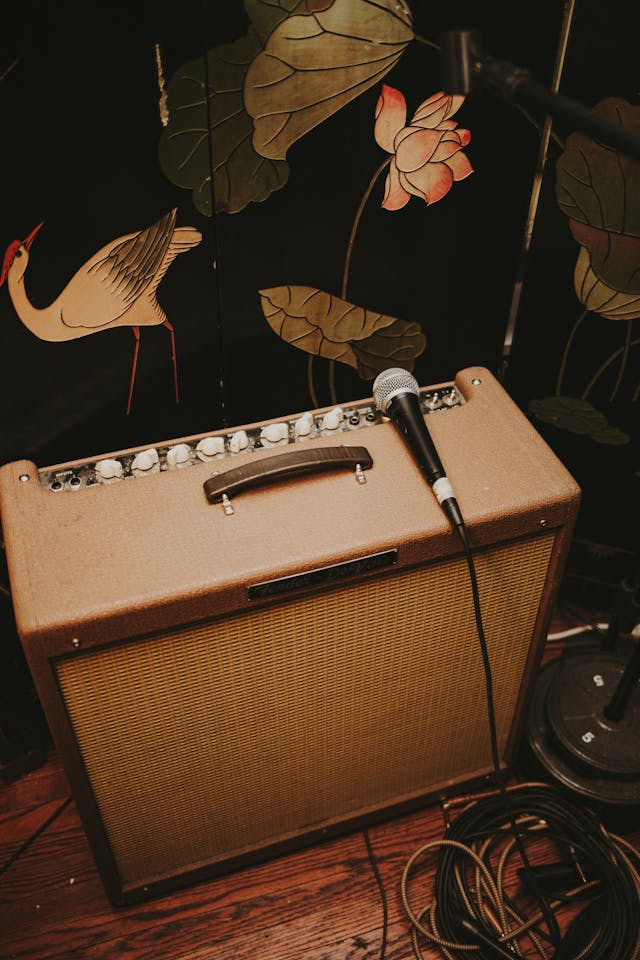[et_pb_section fb_built=”1″ theme_builder_area=”post_content” _builder_version=”4.24.2″ _module_preset=”default”][et_pb_row _builder_version=”4.24.2″ _module_preset=”default” theme_builder_area=”post_content”][et_pb_column _builder_version=”4.24.2″ _module_preset=”default” type=”4_4″ theme_builder_area=”post_content”][et_pb_text _builder_version=”4.24.2″ _module_preset=”default” theme_builder_area=”post_content” hover_enabled=”0″ sticky_enabled=”0″]
Let’s funk it up!
Using 9th chords is a great way to add some spice to your guitar rhythms. They have a lot of uses and once you learn them they will quickly become a regular part of your playing.
Let’s take a look at a common fingering pattern for a 9th chord that you can use to make things “funky”.
Here is an example of a “C” 9th chord you can play right now.
E———-3———————-
B———-3———————-
G———-3———————-
D———-2———————-
A———-3———————-
E———————————-
This chord is played with the 2nd finger on the 3rd fret of the 5th string – the 1st finger on the 2nd fret of the 4th string – and the 3rd finger will “barre” the notes on the 3rd fret of the 1st, 2nd and 3rd strings. The 6th string is not played, or muted.
The note that is on the 5th string in this fingering pattern of a 9th chord is the root note. In the above example, the note on the 5th string is played at the 3rd fret, which is a “C” note, making this a “C9th” chord.
You can simply slide this fingering pattern up and down the guitar neck to play it in any key which is determined by the root note located on the 5th string.
For example – if you slide this same pattern “up” two frets, your 5th string root note will be on the 5th fret, which is a “D” note – making the chord a “D9th” chord.
9th chords are used in a lot of “funk” songs and here is a common example using the Wild Cherry hit “Play that Funky Music“.
E—-7——–7—6—7——–9—8—7——6—7——
B—-7——–7—6—7——–9—8—7——6—7——
G—-7——–7—6—7——–9—8—7——6—7——
D—-6——–6—5—6——–8—7—6——5—6——
A—-7——–7—6—7——–9—8—7——6—7——
E————————————————————–
Although at first glance it may look a little tricky, it’s really pretty easy. You will hold the same fingering pattern throughout the riff, and the chords simply alternate around the same 4 frets, spanning between the 6th and 9th frets. Some funky pick hand strumming in combination with a little palm muting will really bring out the flavor.
Another Use
You can see now how 9th chords are great for funk type rhythms, but they can also be used effectively in blues progressions.
In a standard I, IV, V blues progression using all 7th chords, you might try substituting the IV chord and the V chord with 9th’s.
For example – In a blues progression in the key of “A”, using 7th chords it would look like this:
A, D7, E7
In this case, you could substitute the IV chord (D7), and the V chord (E7) with 9ths. The result would look like this:
A, D9, E9
Try playing both versions and see if you can hear the difference. This is a very common way to play a blues progression.
As you progress on your guitar playing journey, be sure to include 9th chords in your arsenal of weapons. After a while, you won’t be able to live without throwin’ in some “funk”!
[/et_pb_text][/et_pb_column][/et_pb_row][/et_pb_section]


